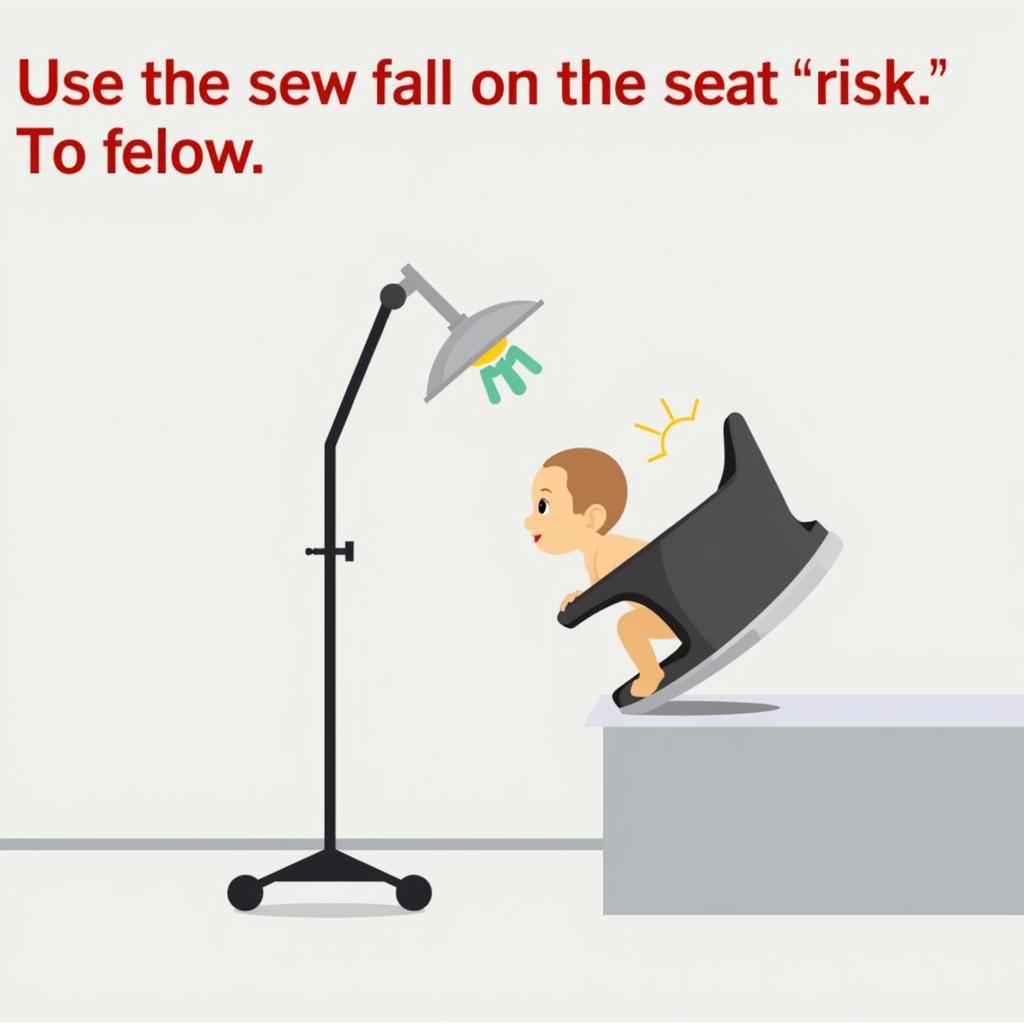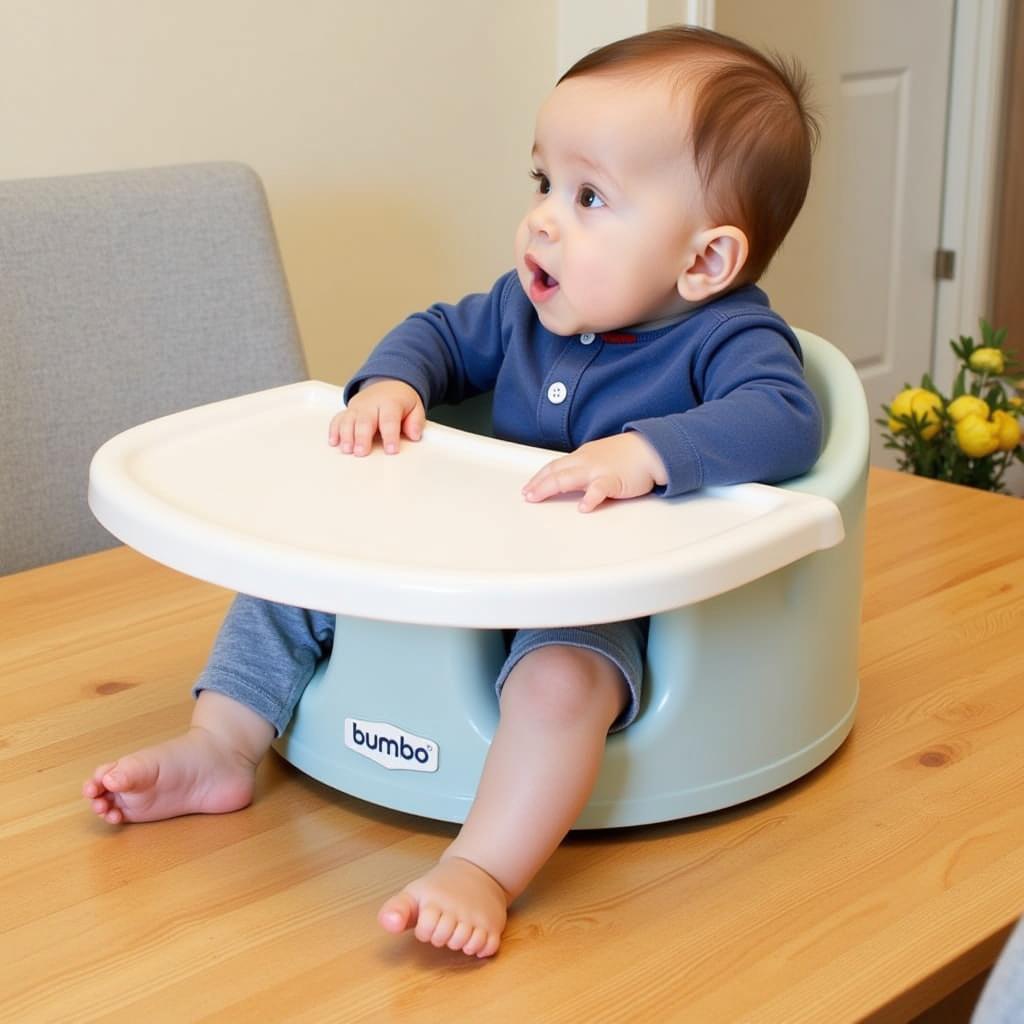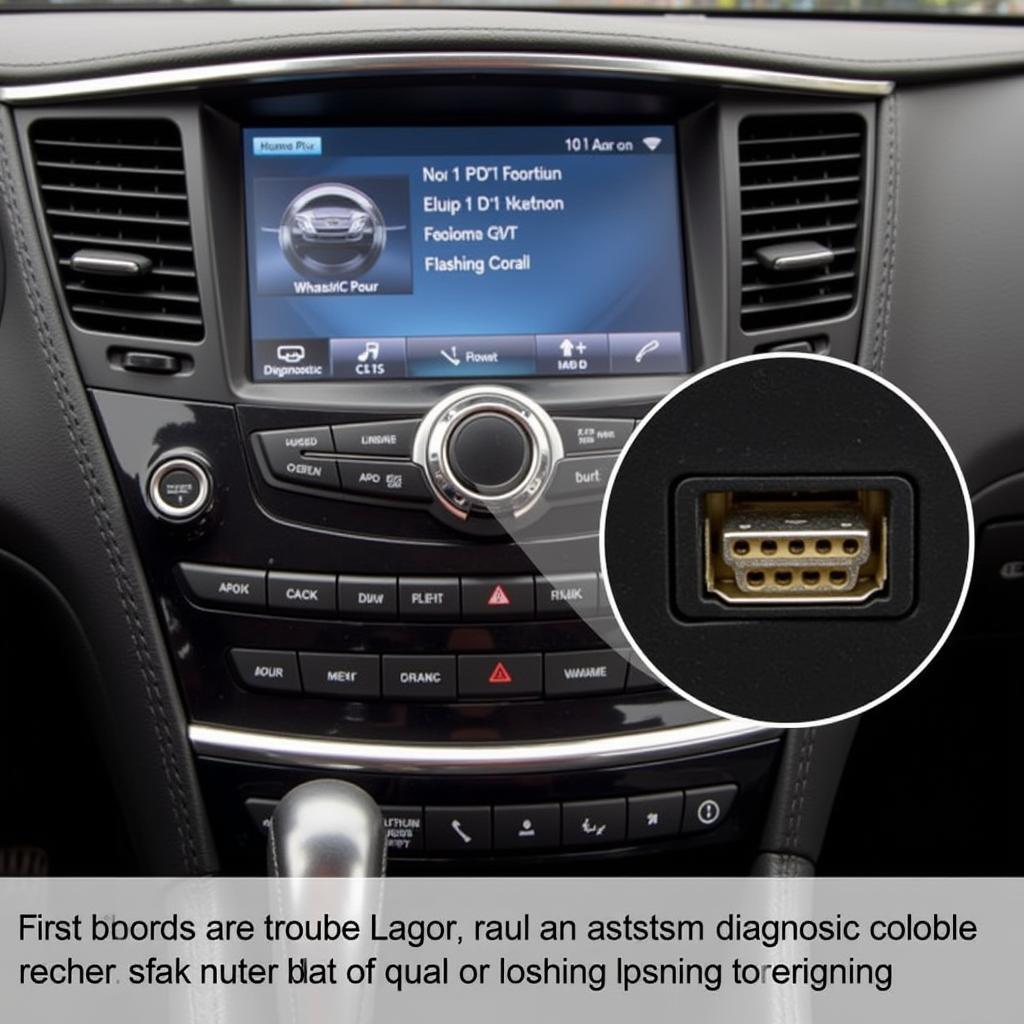The Bumbo seat is a popular infant seat designed to help babies sit upright. However, there have been numerous reports of infants experiencing serious injuries while using this product. This has led to safety warnings being issued by consumer protection agencies worldwide, urging parents to exercise extreme caution when using Bumbo seats.
 Infant tipping over in a Bumbo seat
Infant tipping over in a Bumbo seat
Understanding the Risks: Why Bumbo Seats Can Be Dangerous
While seemingly harmless, Bumbo seats pose several risks if not used correctly. The very design that makes them appealing – their soft, rounded structure – also makes them prone to tipping over. This instability is especially dangerous when the seat is placed on an elevated surface like a table, counter, or even a soft surface like a bed or sofa. Even slight movements from the baby can cause the seat to topple, leading to falls and potential injuries.
 Bumbo seat placed on a table with an infant
Bumbo seat placed on a table with an infant
Another concern is that Bumbo seats can give babies a false sense of stability. This may lead parents to believe their child can sit unassisted before they are developmentally ready. Placing a baby in a Bumbo seat before they have developed adequate head and neck control can increase the risk of positional asphyxia, a potentially life-threatening condition.
Common Bumbo Seat Accidents and Injuries
The most frequently reported accidents associated with Bumbo seats are falls. Babies can topple out of the seat if it tips over, or they may even manage to wriggle free from the leg openings. These falls can result in a range of injuries, from minor bumps and bruises to more serious injuries like skull fractures, concussions, or broken bones.
Essential Bumbo Seat Safety Precautions: Using the Seat Responsibly
Despite the potential risks, Bumbo seats can be used safely if parents follow these crucial precautions:
- Always use the seat on the floor: Never place the Bumbo seat on any elevated surface, including furniture, countertops, or soft surfaces.
- Never leave your baby unattended: Always keep a watchful eye on your baby while they are in the Bumbo seat, even for a short period.
- Use the safety harness: Secure the buckle and ensure it fits snugly to prevent your baby from slipping out.
- Check for wear and tear: Regularly inspect the seat for any signs of damage, such as cracks, tears, or loose parts.
- Discontinue use when the baby can climb out: Once your baby can climb out of the seat or sit up unassisted, it’s time to transition them to a different type of seat.
FAQs about Bumbo Seat Safety
Q: At what age can my baby use a Bumbo seat?
A: While the manufacturer may provide an age recommendation, it’s crucial to prioritize your baby’s developmental stage. Wait until your baby has strong head and neck control and can sit independently for short periods.
Q: Are there any safer alternatives to Bumbo seats?
A: Yes, there are alternative infant seats available that offer better stability and safety features. Consider exploring options like floor seats with wider bases and multiple recline positions.
Q: Can I use a Bumbo seat as a highchair?
A: No, Bumbo seats are not designed or intended for use as highchairs. Never use the seat on a chair or any other elevated surface.
Q: What should I do if my baby has been injured in a Bumbo seat accident?
A: Seek immediate medical attention for your baby and report the incident to the relevant consumer safety authorities in your country.
Prioritizing Your Baby’s Safety
While Bumbo seats can be a helpful tool for parents, it’s crucial to prioritize your baby’s safety above all else. By understanding the potential risks and following the safety guidelines outlined above, you can help ensure a safe and enjoyable experience for your little one. Remember, your baby’s well-being is paramount.


